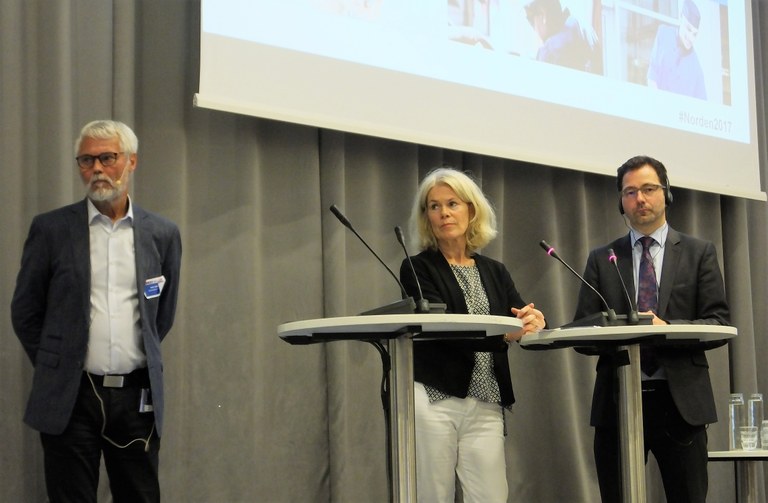Grete Brochmann on refugee policies: Nordics more coordinated now
The Nordic countries are more coordinated now than they were during the major influx of refugees in 2015, believes Grete Brochmann. She has led the two latest inquiries into immigration to Norway.
"Undoubtedly, the refugee crisis created a convergence in Scandinavia which was not there before when it comes to border controls and immigration policies. Sweden made a huge U-turn and became more like Denmark and Norway, which at the same time became more restrictive," she says.
“The similarities are much greater in Scandinavia now than before the refugee crisis.”
Dr Jekyll and Mr Hyde
The authorities often behave as a kind of ‘Dr Jekyll and Mr Hyde’ in immigration policies. On the one hand they want to be very restrictive when people want to come into the country, and on the other hand they want to be very nice when they have actually been allowed to stay. The authorities want to get the refugees into the labour market as quickly as possible and for them to be integrated.
What is the best tactics for the authorities?
“It is completely logical that this is the case in Scandinavia, the system is designed like this. You have to try to control immigration, even if Sweden was very lax for many years. You have to regulate immigration to get it level with society’s capacity to absorb it,” says Grete Brochmann.
“But when people eventually are allowed to stay, it is extremely important that they are included. So this somewhat paradoxical situations is completely logical – if you want to keep the Nordic model.”
Pioneering Sweden
Sweden was actually the pioneering country when it came to shaping the basic Nordic immigration policy, while later governments, and especially the Reinfeldt government, forgot about this basic premise in the Nordic system.

Grete Brochmann debating with Carsten Koch, Chair of Local Government Denmark (BER) and Thomas Liebig, Senior Migration Specialist at the OECD. Photo: Björn Lindahl
Grete Brochmann says this policy was born in 1975.
“Sweden was more experienced with immigration than Denmark and Norway. Sweden was without doubt the pioneering country in Scandinavia when it comes to this duality.”
In your inquiry you also points to another duality, the fact that you end up with ‘self-segregation’ if immigrants are not treated well enough?
“The reasoning was that if the majority culture pushes its values onto the immigrants to a too large degree, and imposes strict regulations on how they can live their lives, you might end up with that effect. It is an unintended consequence of tough integration policies.
“But that is only one side of the coin. If you demand too little integration, you could end up with a negative reaction among the majority population. And we do see these tendencies to a large extent across the whole of Europe now. It is not only a theoretical argument.”
The state should impose norms
You said in your talk that you consider it best that the state takes a central decision for the entire nation when there are cultural clashes over issues like whether teachers or students should be allowed to carry the niqab in school?
“Yes, that is what the inquiry which I led concluded, since there has been a tendency in Norway to kick conflicts further down the system so that the individual school or social services office have been left to their own devices. People there are often less well positioned to make the difficult considerations which are needed. We believe some central guidelines can be of help for local institutions.
“This is something which is totally ordinary in a political landscape. It is not the members of the inquiry who should decide how these decisions are made – for instance when it comes to the use of the niqab. This is about creating norms in a clearer manner than what has been done before.”
You spoke a lot about the ability of a society so absorb immigrants. But is it ever possible to say that the goal has been reached, or will there always be someone who thinks there are too many immigrants coming in?
“You have to look at the bigger picture. That is why I also talk about the ability to absorb in the longer term. But we believe that it is important as a fundamental way of thinking. If you have a certain percentage of immigrants who do not absorb, it does not mean the policy has failed.
“As a main principle there needs to be a correlation between the demand that exists in the labour market and how many are coming. This also goes for the capacity of the health and education institutions in relation to how many immigrants are coming.
“This is the balance we believe you must keep. The basic principles have been in place since immigration policies were introduced in the Nordic region,” says Grete Brochmann.
- Nordic conference on the integration of refugees into the labour market
-
Grete Brochmann is Professor at the Department of Sociology and Human Geography at the University of Oslo. She has headed two major inquiries on the long-term consequences of immigration to Norway. She participated at the Nordic conference on integration in Oslo on 13 June (above)
 Follow us on Facebook
Follow us on Facebook
